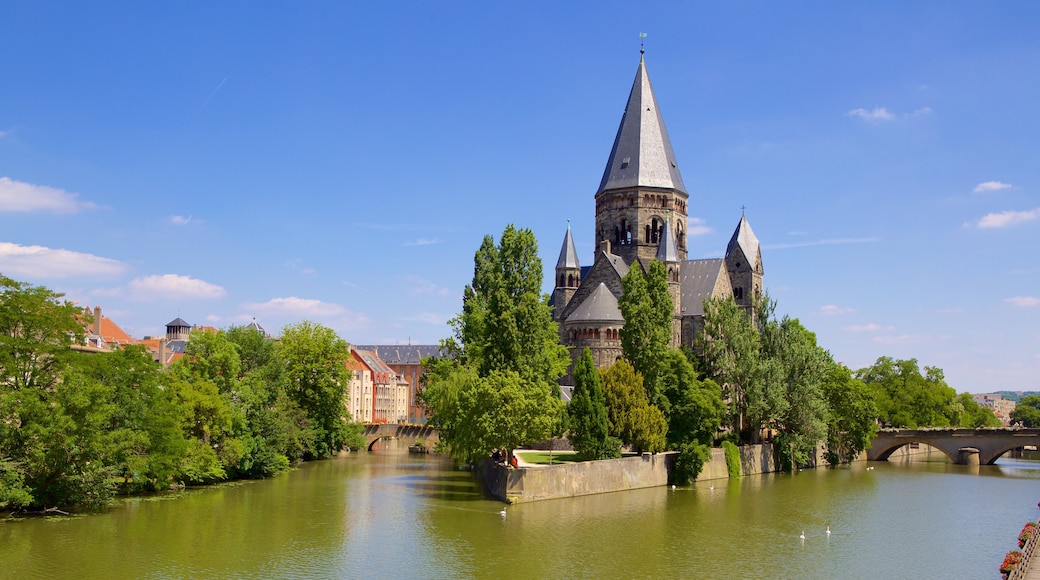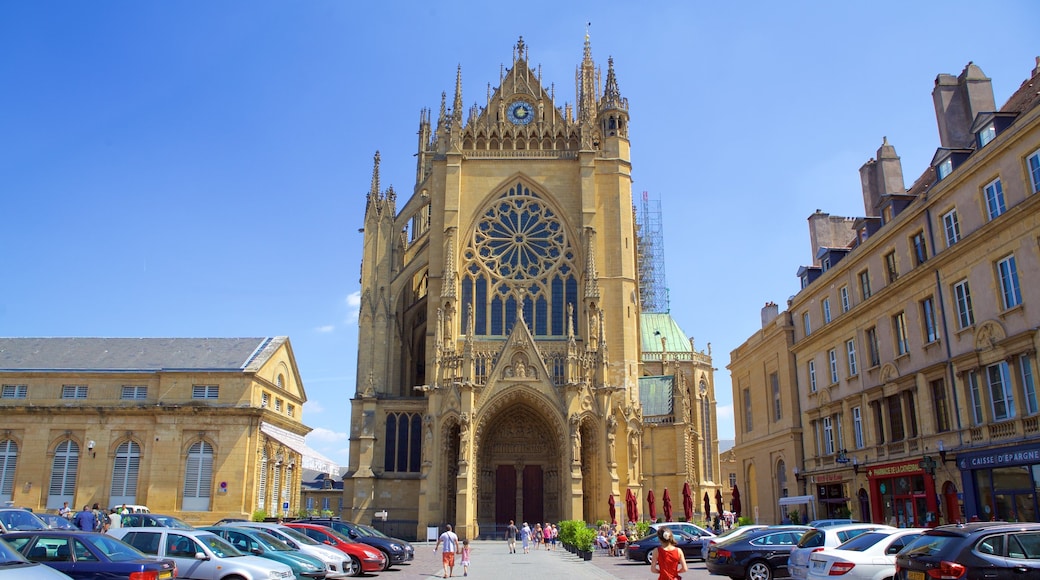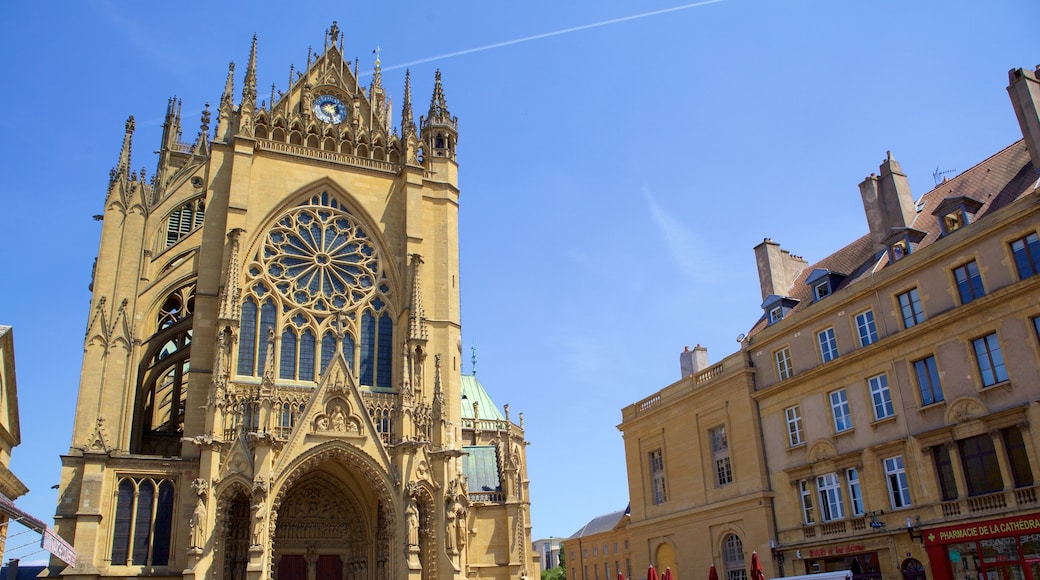The picturesque region of Moselle is named after its main river. It borders Germany to the east and Luxembourg to the north. Its proximity to the German frontier has had a huge effect on the region’s history and architecture. The area’s largest city of MetzOpens in a new window is known for its extraordinary cathedral. Cycle through tiny villages along the Moselle River to encounter a slower pace of life.
Visit Metz to see its stunning cathedral, which claims to hold the largest amount of stained-glass windows in the world. The Gothic structure also has a very high nave and fantastic collection of religious artifacts. See the Gare de Metz-Ville, the city’s main railway station, which is often described as a Gothic palace. The city is full of charming parks and scenic cycling lanes.
The nearby village of Saint-Quirin is a change of scenery from the bigger cities. Its charming buildings are built into large green hills and forests. This former pilgrimage village has a history stretching back more than 2,000 years.
Explore quaint back alleys and small streets of the commune of Rodemack. Learn about its military history from its fortified walls, which are similarly present in the village of Bitche. See its citadel from the 1700s and find out about the Siege of Bitche.
The department has changed hands between France and Germany many times over the years. After World War II, it returned to France and the local people shunned their German roots. Practice your French here, although in some tiny hamlets you might still hear the local tongue of Platt Lorrain, which sounds like German. The region has hot, humid summers and cold winters with snow.
Moselle is a department in the Lorraine region near the German border in northeastern France. Metz is about 200 miles (330 kilometres) east of ParisOpens in a new window. Buses connect the region to the capital city. Once in Moselle, get around by bus or bicycle.




